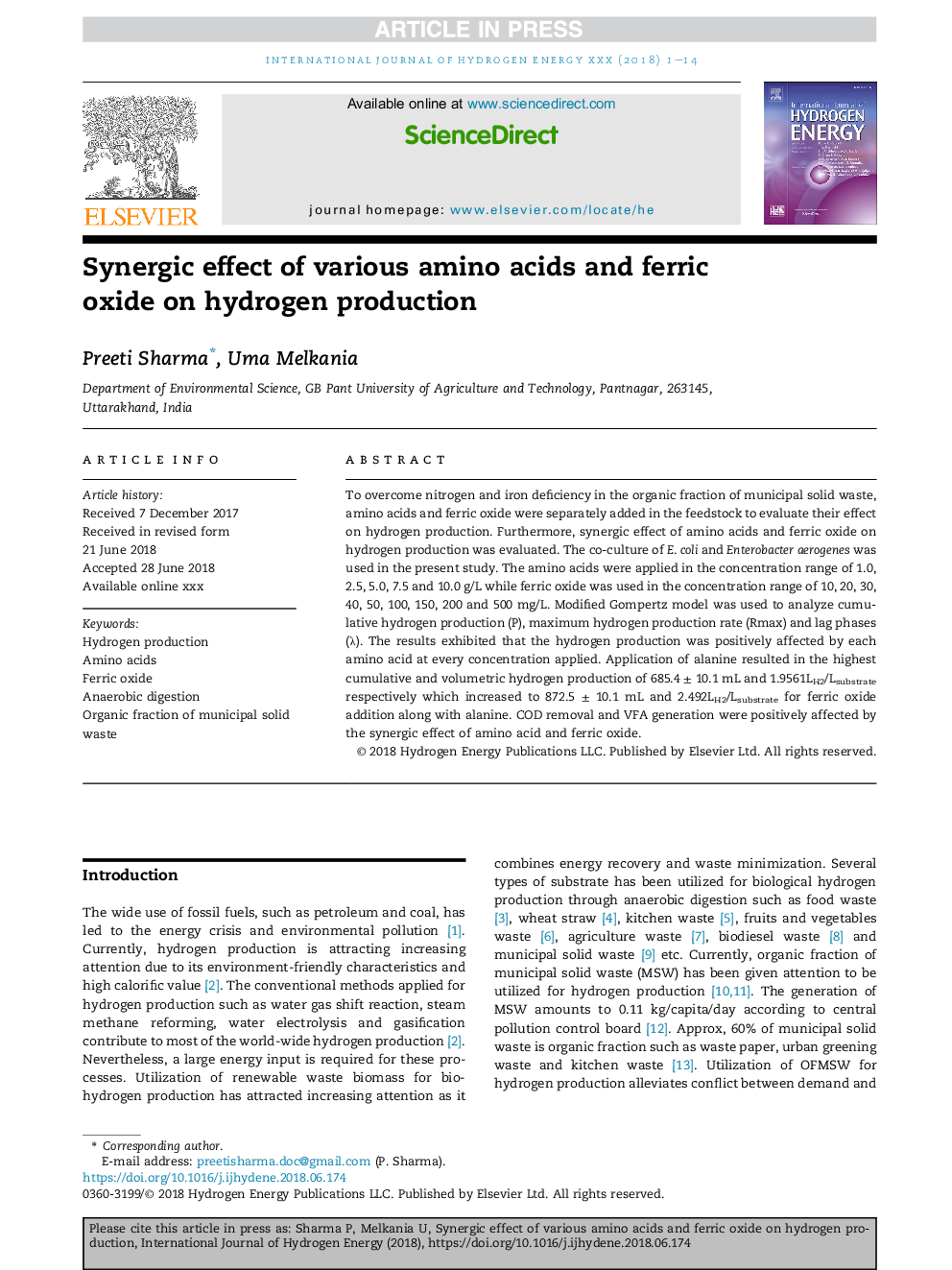| Article ID | Journal | Published Year | Pages | File Type |
|---|---|---|---|---|
| 8961272 | International Journal of Hydrogen Energy | 2018 | 14 Pages |
Abstract
To overcome nitrogen and iron deficiency in the organic fraction of municipal solid waste, amino acids and ferric oxide were separately added in the feedstock to evaluate their effect on hydrogen production. Furthermore, synergic effect of amino acids and ferric oxide on hydrogen production was evaluated. The co-culture of E. coli and Enterobacter aerogenes was used in the present study. The amino acids were applied in the concentration range of 1.0, 2.5, 5.0, 7.5 and 10.0 g/L while ferric oxide was used in the concentration range of 10, 20, 30, 40, 50, 100, 150, 200 and 500 mg/L. Modified Gompertz model was used to analyze cumulative hydrogen production (P), maximum hydrogen production rate (Rmax) and lag phases (λ). The results exhibited that the hydrogen production was positively affected by each amino acid at every concentration applied. Application of alanine resulted in the highest cumulative and volumetric hydrogen production of 685.4 ± 10.1 mL and 1.9561LH2/Lsubstrate respectively which increased to 872.5 ± 10.1 mL and 2.492LH2/Lsubstrate for ferric oxide addition along with alanine. COD removal and VFA generation were positively affected by the synergic effect of amino acid and ferric oxide.
Keywords
Related Topics
Physical Sciences and Engineering
Chemistry
Electrochemistry
Authors
Preeti Sharma, Uma Melkania,
